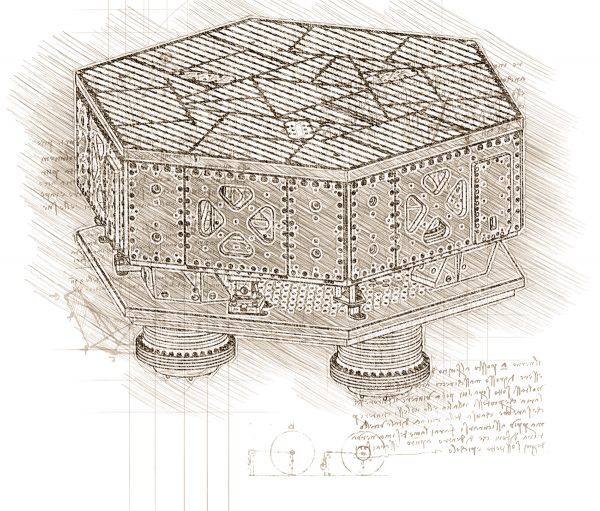Difference between revisions of "GEMINI"
| Line 2: | Line 2: | ||
The underground facility GEMINI is dedicated to the development of important vibration-isolation and control technologies for the Einstein Telescope and to test next-generation inertial sensors for the Einstein Telescope and the Lunar Gravitational-wave Antenna. In consists of two in-vacuum mechanical structures as shown in the sketch. The mechanical structures are divided into two stages. The first stage is mounted to the ground, while the second stage is suspended from three maraging-steel spring blades. Three high-end low-frequency seismometers (Nanometrics T360 GSN) are used on each suspended platform to monitor its displacement. The control system of the platform uses coil actuators to counteract the observed displacement. | The underground facility GEMINI is dedicated to the development of important vibration-isolation and control technologies for the Einstein Telescope and to test next-generation inertial sensors for the Einstein Telescope and the Lunar Gravitational-wave Antenna. In consists of two in-vacuum mechanical structures as shown in the sketch. The mechanical structures are divided into two stages. The first stage is mounted to the ground, while the second stage is suspended from three maraging-steel spring blades. Three high-end low-frequency seismometers (Nanometrics T360 GSN) are used on each suspended platform to monitor its displacement. The control system of the platform uses coil actuators to counteract the observed displacement. | ||
| − | + | Measurements with a laser interferometer will be used to suppress the relative motion between the two suspended platforms. This system is known as inter-platform control and is crucial for Einstein Telescope to facilitate control of its auxiliary interferometric degrees of freedom and to reduce stray-light noise. | |
Revision as of 18:21, 11 July 2023
The underground facility GEMINI is dedicated to the development of important vibration-isolation and control technologies for the Einstein Telescope and to test next-generation inertial sensors for the Einstein Telescope and the Lunar Gravitational-wave Antenna. In consists of two in-vacuum mechanical structures as shown in the sketch. The mechanical structures are divided into two stages. The first stage is mounted to the ground, while the second stage is suspended from three maraging-steel spring blades. Three high-end low-frequency seismometers (Nanometrics T360 GSN) are used on each suspended platform to monitor its displacement. The control system of the platform uses coil actuators to counteract the observed displacement.
Measurements with a laser interferometer will be used to suppress the relative motion between the two suspended platforms. This system is known as inter-platform control and is crucial for Einstein Telescope to facilitate control of its auxiliary interferometric degrees of freedom and to reduce stray-light noise.
